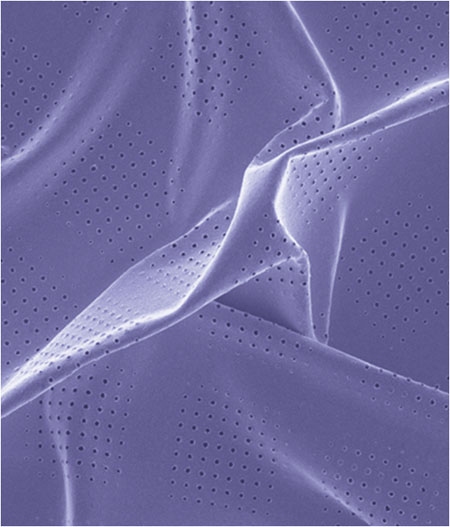Surface plasmons - collective oscillations of free charges - on metal surfaces have resulted in demonstrations of enhanced optical transmission, collimation of light through a subwavelength aperture, negative permeability and refraction at visible wavelengths, and second-harmonic generation. The structures that display these plasmonic phenomena typically consist of ordered arrays of particles or holes with sizes of the order of 100 nm. At the NU-MRSEC, a new nanofabrication technique based on soft interference lithography was used to manufacture multiscale arrays of nanoparticles and nanoholes with unexpected optical properties. 
This scanning electron microscopy image depicts a free-standing gold film perforated with 100-nm holes patterned in microscale patches.